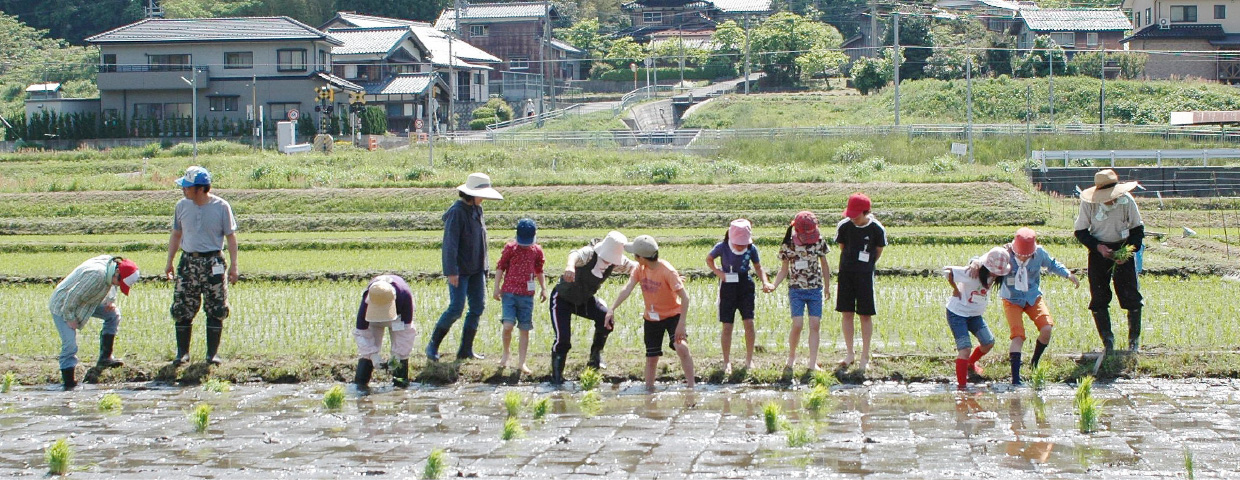UPDATE: The Call for Papers for SITR vol. 2 is now CLOSED. Thank you to everyone who sent submissions.
The IPSI Secretariat is pleased to announce a call for papers for the second volume of the series “Satoyama Initiative Thematic Review”. The theme of this volume will be “Incorporating concepts and approaches of socio-ecological production landscapes and seascapes (SEPLS) into policy and decision-making”. Authors from IPSI member organizations who have case studies relevant to the theme are highly encouraged to submit a manuscript by 12 February 2016 (for more information on the scope, timeline, eligibility and submission, please refer to the sections below).
About the “Satoyama Initiative Thematic Review”
In January 2015, the IPSI Secretariat initiated a project to create a publication series titled the “Satoyama Initiative Thematic Review”. The Thematic Review is a compilation of case studies providing useful knowledge and lessons focusing on a specific theme related to “socio-ecological production landscapes and seascapes (SEPLS)”. The overall aim of the Thematic Review is to collect experiences and relevant knowledge, especially from practitioners working on the ground, considering their usefulness in providing concrete and practical knowledge and information as well as their potential in contributing to policy recommendations. Each issue will also include a synthesis paper in order to detail its relevance to policy and academic discussion, as well as to help make lessons learned practical in the field. This call is for the second volume of the series. The first volume is under development and will be published soon.
Theme and scope
The theme and the scope of the 2016 publication, Volume 2 of the “Satoyama Initiative Thematic Review”, are as follows:
Theme:
Incorporating concepts and approaches of socio-ecological production landscapes and seascapes (SEPLS) into policy and decision-making
Scope:
Since the development of the Satoyama Initiative, the concept of SEPLS has been getting more recognition around the world, and various approaches have been used in order to promote and derive benefits from sustainably-managed production areas. Many activities and projects incorporate multi-dimensional aspects of landscapes and seascapes to ensure benefits both for biodiversity and for the livelihood and well-being of local communities. Landscape-level, multi-sectoral and stakeholder approaches are often employed, and in many, traditional knowledge is considered important for cultural identity and innovation. Such approaches can contribute to addressing several of the Sustainable Development Goals (SDGs), including those related to food security (Goal 2), climate change (Goal 13), oceans, seas and marine resources (Goal 15) and terrestrial ecosystems (Goal 16), among others.
Despite the importance of SEPLS concepts and approaches, and the existence of innovative activities and good practices, sufficient measures to uptake and incorporate them into policy, institutions, economic mechanisms and other frameworks that widely influence the decision-making and behavior of people and organizations are still limited.
In this context, the second issue of the Satoyama Initiative Thematic Review will invite papers on lessons learned from processes for mainstreaming SEPLS concepts and approaches in policy and other frameworks that broadly affect people’s or organizations’ behavior and decision-making. The mainstreaming can relate to activities at multiple scales of operation (from landscape to provincial to national or regional) that demonstrate how to include SEPLS priorities in relevant policies at the scale of operation.
Examples of processes to mainstream SEPLS concepts and approaches may include advocacy, multi-stakeholder engagement, facilitation and coordination of institutions, concrete tools and information useful for policymakers. Policy areas may vary and could include environment, agriculture, development, culture, tourism and others. Information on SEPLS approaches that have been taken up in policy or other frameworks, processes used for mainstreaming, findings on necessary capacities, success factors and obstacles are expected to be shared in this publication.
How to submit a manuscript and what happens after submission
Eligibility:
Authors are invited to submit a paper if at least one of the authors belongs to an IPSI Member Organization. (See https://satoyama-initiative.org/old/en/partnership/ipsi_members/)
Procedure:
Please submit manuscripts to the IPSI Secretariat by email (isi@unu.edu) by 12 February 2016. Authors are requested to follow the Authors’ Guide (Author’s Guide_SI Thematic Review 2016) and the reference style (Reference style), and are encouraged to use the Template for Manuscripts (Template for manuscripts-SITR2016). Case studies that have already been submitted to the IPSI Secretariat can be submitted after editing as needed to conform to the Author’s Guide. After screening, selected authors will be informed in late February and then invited to a Case Study Workshop planned to be held in Japan in late May 2016. This Case Study Workshop will offer an opportunity for getting feedback on your manuscript and discussing among participants for development of a synthesis paper to be included in the volume.
Timeline (dates are subject to change):
| 22 January 2016: | Deadline for submission of manuscripts |
| End of February 2016: | Notification of selected authors |
| End of May 2016: | Selected authors participate in Case Study Workshop (Japan) |
| June 2016: | Revision of manuscripts |
| October 2016: | Publication |
Related documents:
- Author’s Guide (Author’s Guide_SI Thematic Review 2016)
- Reference style (Reference style)
- Template for Manuscripts (Template for manuscripts-SITR2016)
For inquiries, please contact
Ms. Caecilia Manago or Dr. Kaoru Ichikawa at the IPSI Secretariat (isi@unu.edu).



